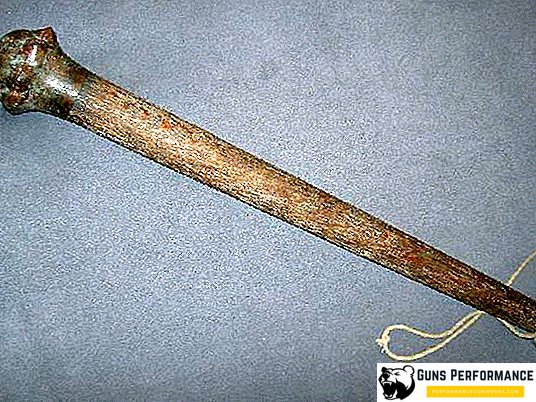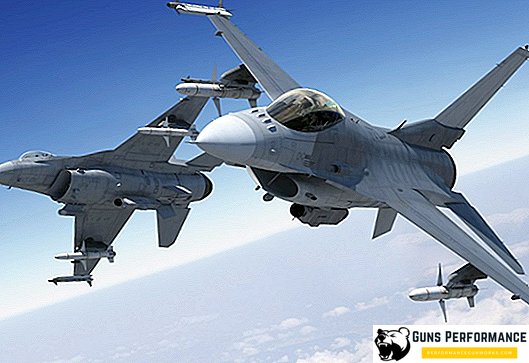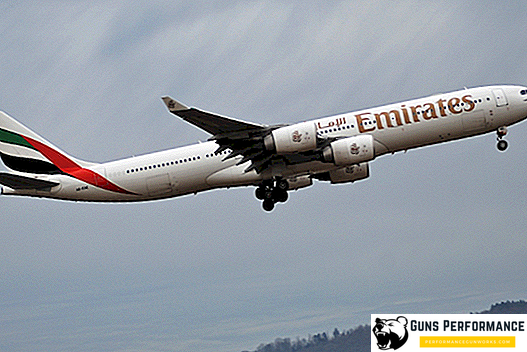The ZIL-130 in 1962 replaced the ZIL-164, which by then was morally obsolete and required urgent replacement. For 48 years of production, transport has become one of the most common in the Soviet and post-Soviet space. In the 90s, the production of the machine was transferred to Novouralsk to the plant "Amur".
Transport was originally intended for use in the economic sphere, and only then in the military. Therefore, the car ZIL-130 painted in blue and white. Previously, only khaki was used. The quality and reliability of the car allow you to use it in work today.
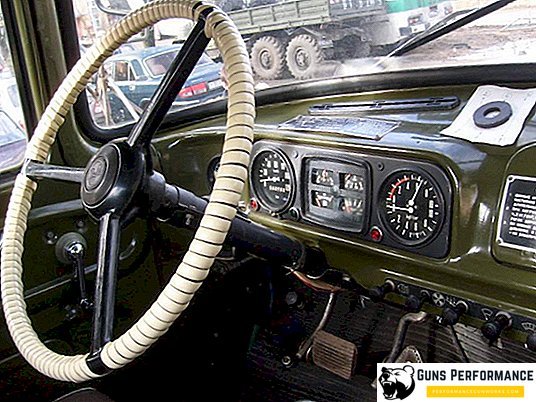
History of creation
The design of the new truck began in 1953. Then the specialists were faced with the task of replacing the outdated ZiS-150 / ZIL-164. The main project was appointed by A.M. Krieger, and A.G. Festa. Initially, the ZIL-130 dump truck was called ZiS-125. Transport design involved in Dnepropetrovsk, but over time, all the drawings and design information were transferred to Moscow.
The prototype appeared in 1956. He was an improved version of the original ZiS-125, received an improved version and was deprived of the main drawbacks. For 3 years, a lot of tests and tests were carried out at the plant, based on the results of which it was decided to immediately start mass production of the ZIL-130 car.
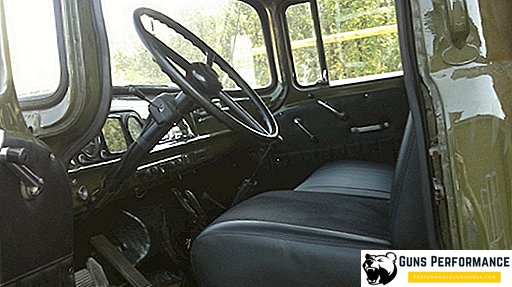
Production was planned to begin in 61-62 years, but this was prevented by unplanned modernization of the plant, which began in 1961. In 1962, about 10 copies of the truck were produced. This was done to refine all production processes. In 1963 in Germany at the exhibition the new car received the highest order award.
Modernization of the plant ended in 1964. A few months after its completion, they launched the production of a new car. The first batches made by request went to state-owned enterprises throughout Russia, and only then went on sale.
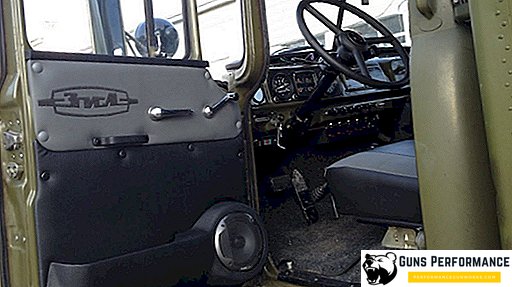
Constructions
ZIL-130: technical specifications were excellent for the 60s, and someone is satisfied today. The dimensions of the car made it possible to move freely around the city. The length of the truck was 6.67 meters. Width - 2.5 meters, height - 2.4 meters. Body volume - 5.1 cubic meters, and the area of the platform - 8.72 square meters.
Design
On the basis of this machine was released many different modifications that were used to perform tasks of varying complexity. The most significant reconstruction took place in 1966 and 1977. Then there were changes in technical and cosmetic characters. The appearance of different copies was different, as the transport could be used as a fire truck, truck crane, van, etc.
Turning radius is 7 meters, it allows you to move freely on the busy roads of modern cities. The weight of the dump truck is 4000 kilograms, the carrying capacity is 3 tons. Power makes it possible to transport trailers weighing no more than 8 tons.

In the 60s, the design of the truck was a real breakthrough. He constantly attracted the attention of the environment. As mentioned above, in the color scheme used blue and white colors, abandoning the army colors.
The hood was made for alligator type. The wings were streamlined, high-quality visibility to the driver provided a panoramic windshield. In the cabin it was possible to open the windows and a special hatch for airing.

Body
The device body allows you to carry loads of various types and passengers. The tailgate opened for convenient loading. Inside the body were benches on which could accommodate up to 16 people. They could climb to increase the space for loading. Together with the machine was a design for the installation of the awning and the canvas itself.
Cabin
For business purposes, transport was produced with a standard ZIL-130 cab. The trucks produced by army orders were painted in khaki color, and in the cabin there were additional fuel canisters, a shovel, an ax and a few more essential tools.
To improve visibility in the design was added panoramic windshield. This innovation is not approved by all, as accustomed to the windshield. He was compensated by the opening windows and the hatch — enough fresh air was flowing through them. The grille of the car became the visiting card of the car.
Made by all-metal technology. Designed for two passengers and a driver. The design was so successful that in our years it cannot be called completely outdated. Compared with previous generations of Soviet trucks, the level of comfort has been significantly improved. Sitting at the workplace has become more convenient, and the width of the cabin has been increased by 1.2 meters.
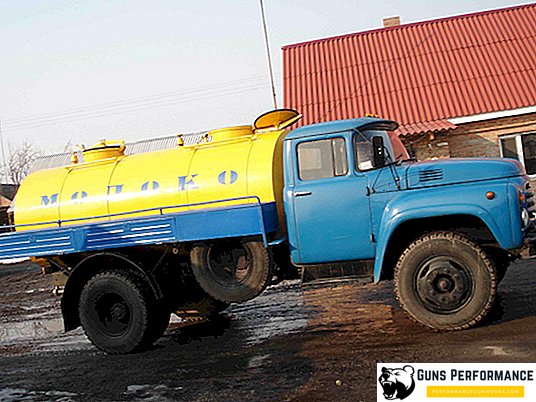
The dashboard was built with the task of free access to the driver to all control devices. The driver had a separate seat, for passengers there was a double sofa. Upholstery was quality, soft filler. The driver could adjust his seat in the horizontal and vertical planes, as well as adjust the angle of the backrest.
This car was the first Soviet received power steering. The introduction of this mechanism has improved the handling and safety of movement. In the event of a defect in one wheel of the ZIL-130, a truck (with certain skills) could easily be kept on the road to a full stop.
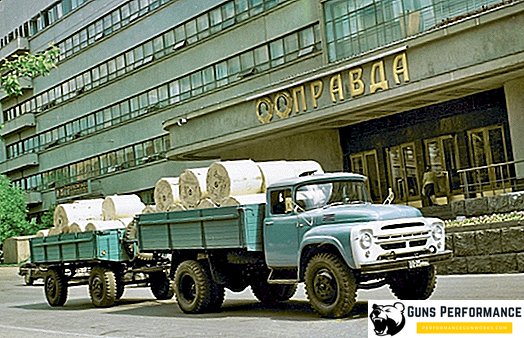
Power point
The engine ZIL-130 was developed on the basis of the ZIL-111. He also received eight cylinders, which were arranged in a V-type, but the volume was reduced under the use of AI-76 gasoline. The device was supplemented with a two-chamber carburetor and a limiter speed limit.
When creating the first sample, the designers wanted to install an experimental motor, which also had eight cylinders in the shape of V and a volume of 5.2 liters. This unit developed 135 horsepower and 3200 revolutions per minute. The first tests showed that such a motor would not give the truck a stable and high-quality performance, so they refused to use it.
The factory shut down the production of old 6-cylinder engines in favor of an improved 8-cylinder engine. Some design improvements have increased the power to 150 horsepower. The volume was 6 liters, a maximum speed of 90 km / h and 3000 rpm.
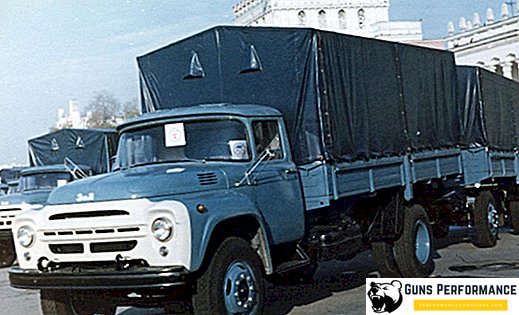
The design of the power unit was supplemented by an economizer and a mechanical pump to accelerate. The speed controlled pneumatic regulator. For lubrication, a combined type system was used: the oil is sprayed into the parts by means of pressure. Complementing the design of the filtering system, which was presented in the form of thin metal plates.
Engine fuel was fed by a fuel pump, the air was cleaned by a two-level filter. ZIL-130 fuel consumption was 30-40 liters per 100 km. In the Soviet years, this expense did not disturb the owners due to the low cost of gasoline. A full tank was enough for 400-450 kilometers.
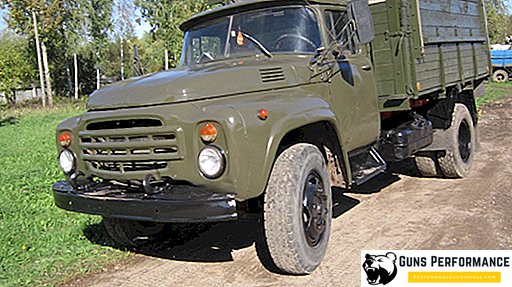
Transmission and Transmission
Rear axle dump truck. Clutch ZIL-130 is dry, has one disc. Gearbox ZIL-130 mechanical, has five speeds, supplemented by two synchronizers. Such a device was innovative for the Soviet engineering industry, and in the following years it underwent some modifications.
The propeller shaft is used to transmit torque from the transaxle to the rear axle of the ZIL-130. The car had two shafts, between which there was a support. It was attached to the frame ZIL-130. Models with a shortened base had only one shaft and were deprived of support. Transmission ZIL-130 in the 67th year changed the design. The driven shaft received a bearing, the shaft journal structure changed, the needle-type bearing was replaced with a separator.
For the first time, the shift knob was treated with a rubber seal. It was used as insulation, which slept the car while overcoming water obstacles and heavy rainfall. A special paste was also used for insulation, which closed the lid of the ZIL-130 box and treated the surface of the oil sump.
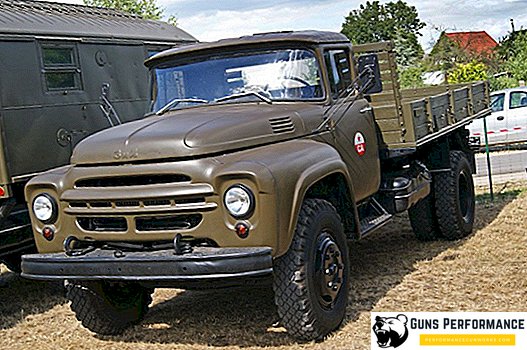
Brake system
All wheels have auto drum brakes. They are activated due to the impact of the pneumatic mechanism. Air reserves are stored in a tank with pressure, which gives the compressor ZIL-130, which is made according to the mechanical type. The ZIL-130 compressor has two cylinders, which allows it to operate at a speed of 2000 revolutions per minute. A liquid system is used for cooling. At the heart of the parking brake is a drum that blocks the propeller shaft when activated.
Advantages and disadvantages
Experienced drivers and specialists have the following advantages for this car:
- Low price tag;
- Lack of high requirements for used fuel;
- Compact size, allowing to work in the conditions of modern cities;
- Cheap maintenance and repair;
- Good cross;
- The presence of GUR in the design.
The disadvantages include:
- Low top speed and poor acceleration;
- It breaks quickly, it is necessary to repair often;
- High gas mileage
- Bad insulation and insulation of the cabin.
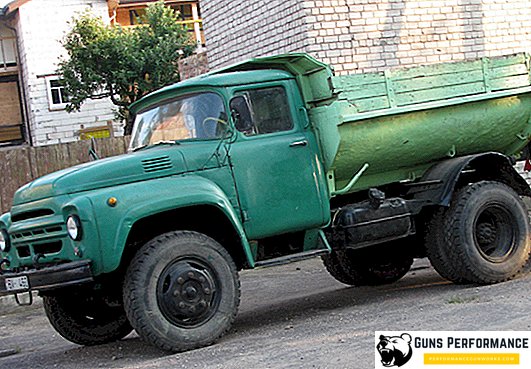
What can be concluded?
In 1986, the production was put ZIL-4331. He was ahead of the popular transport in many ways. In the early 90s, the deterioration of the economic situation forced the owners to abandon the use of the "130th" because of the high cost of fuel and repairs.
If in our time a person buys such a machine for continuous operation, he has to do some rebuilding. In particular, the use of ZIL-130 diesel saves money on gasoline costs.
Most often, the dump truck buy for the implementation of creative ideas. Truck tuning is common in the post-Soviet space. You can buy a car for 30-50 thousand rubles, but then you have to spend money on repairs. The price of copies in good condition can reach up to 400 thousand rubles.



